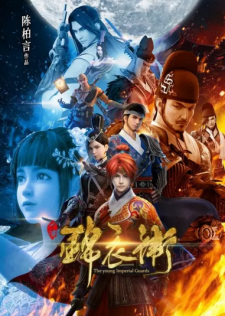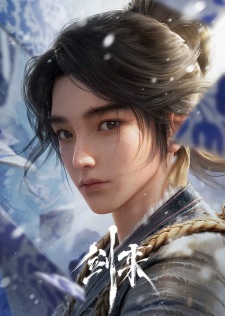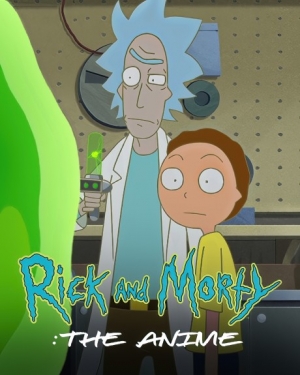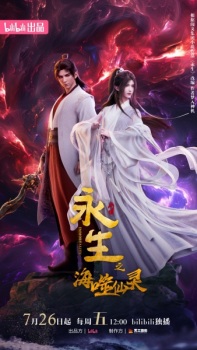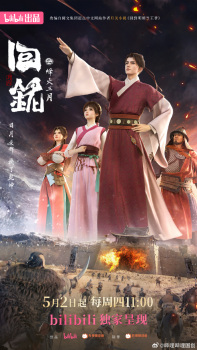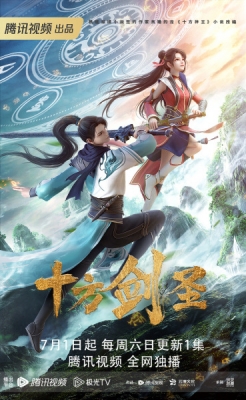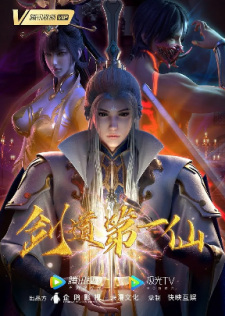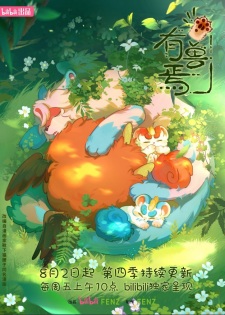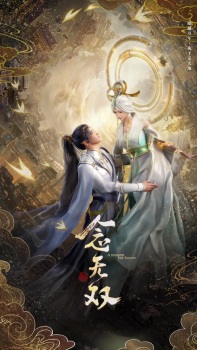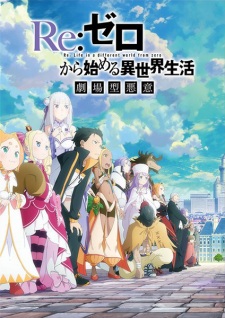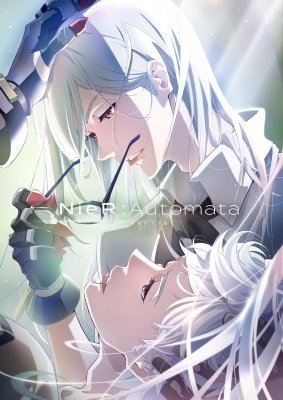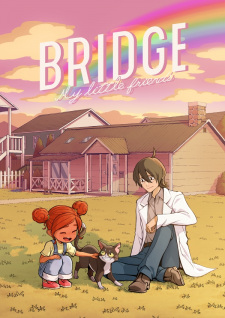![[RAW] Kashi no Ki Mokku](https://cdn.noitatnemucod.net/thumbnail/300x400/100/e36bfdd3d90c11b424ee493a9c08fa93.jpg)
[RAW] Kashi no Ki Mokku
Finished Airing
Jan 4, 1972 to Dec 1, 1972
Tatsunoko Production
5.89
Episodes
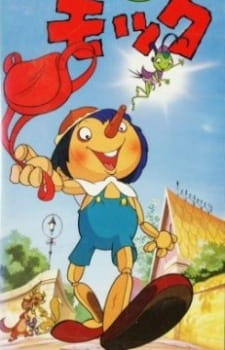
EP 1
1. Episode 1
This version of Pinocchio tells a story of an extremely gullible, naive and morally confused wooden doll brought to life by a mystical blue fairy. Pinocchio (Mokku) is characterized as having many character faults which he must learn to overcome in order to be worthy of being granted humanity. Some of these character faults include selfishness, rudeness, insensitivity, indolence, obstinacy, over- trusting, self-pity, stupidity, disobedience, compulsive lying, arrogance, greed, cowardice, recklessness, cruelty, foolishness and an inability to learn from mistakes. Throughout the entire series Pinocchio (Mokku), partly due to his own delinquency and repetitive disobedience, must undergo other costly ordeals of hardship and pain in which he is continuously tormented, persecuted, bullied, humiliated, tricked, ridiculed, ostracised, beaten, downtrodden and subjected to degrading and inhumane treatment. Its plain depiction of the austere reality of what it would be like to be literally subhuman growing up in a world of danger and hardship, makes this another good example of traditional Japanese stories, which teach moral observance through tough endurance. (Source: Wikipedia)

EP 2
2. Episode 2
This version of Pinocchio tells a story of an extremely gullible, naive and morally confused wooden doll brought to life by a mystical blue fairy. Pinocchio (Mokku) is characterized as having many character faults which he must learn to overcome in order to be worthy of being granted humanity. Some of these character faults include selfishness, rudeness, insensitivity, indolence, obstinacy, over- trusting, self-pity, stupidity, disobedience, compulsive lying, arrogance, greed, cowardice, recklessness, cruelty, foolishness and an inability to learn from mistakes. Throughout the entire series Pinocchio (Mokku), partly due to his own delinquency and repetitive disobedience, must undergo other costly ordeals of hardship and pain in which he is continuously tormented, persecuted, bullied, humiliated, tricked, ridiculed, ostracised, beaten, downtrodden and subjected to degrading and inhumane treatment. Its plain depiction of the austere reality of what it would be like to be literally subhuman growing up in a world of danger and hardship, makes this another good example of traditional Japanese stories, which teach moral observance through tough endurance. (Source: Wikipedia)

EP 3
3. Episode 3
This version of Pinocchio tells a story of an extremely gullible, naive and morally confused wooden doll brought to life by a mystical blue fairy. Pinocchio (Mokku) is characterized as having many character faults which he must learn to overcome in order to be worthy of being granted humanity. Some of these character faults include selfishness, rudeness, insensitivity, indolence, obstinacy, over- trusting, self-pity, stupidity, disobedience, compulsive lying, arrogance, greed, cowardice, recklessness, cruelty, foolishness and an inability to learn from mistakes. Throughout the entire series Pinocchio (Mokku), partly due to his own delinquency and repetitive disobedience, must undergo other costly ordeals of hardship and pain in which he is continuously tormented, persecuted, bullied, humiliated, tricked, ridiculed, ostracised, beaten, downtrodden and subjected to degrading and inhumane treatment. Its plain depiction of the austere reality of what it would be like to be literally subhuman growing up in a world of danger and hardship, makes this another good example of traditional Japanese stories, which teach moral observance through tough endurance. (Source: Wikipedia)

EP 4
4. Episode 4
This version of Pinocchio tells a story of an extremely gullible, naive and morally confused wooden doll brought to life by a mystical blue fairy. Pinocchio (Mokku) is characterized as having many character faults which he must learn to overcome in order to be worthy of being granted humanity. Some of these character faults include selfishness, rudeness, insensitivity, indolence, obstinacy, over- trusting, self-pity, stupidity, disobedience, compulsive lying, arrogance, greed, cowardice, recklessness, cruelty, foolishness and an inability to learn from mistakes. Throughout the entire series Pinocchio (Mokku), partly due to his own delinquency and repetitive disobedience, must undergo other costly ordeals of hardship and pain in which he is continuously tormented, persecuted, bullied, humiliated, tricked, ridiculed, ostracised, beaten, downtrodden and subjected to degrading and inhumane treatment. Its plain depiction of the austere reality of what it would be like to be literally subhuman growing up in a world of danger and hardship, makes this another good example of traditional Japanese stories, which teach moral observance through tough endurance. (Source: Wikipedia)

EP 5
5. Episode 5
This version of Pinocchio tells a story of an extremely gullible, naive and morally confused wooden doll brought to life by a mystical blue fairy. Pinocchio (Mokku) is characterized as having many character faults which he must learn to overcome in order to be worthy of being granted humanity. Some of these character faults include selfishness, rudeness, insensitivity, indolence, obstinacy, over- trusting, self-pity, stupidity, disobedience, compulsive lying, arrogance, greed, cowardice, recklessness, cruelty, foolishness and an inability to learn from mistakes. Throughout the entire series Pinocchio (Mokku), partly due to his own delinquency and repetitive disobedience, must undergo other costly ordeals of hardship and pain in which he is continuously tormented, persecuted, bullied, humiliated, tricked, ridiculed, ostracised, beaten, downtrodden and subjected to degrading and inhumane treatment. Its plain depiction of the austere reality of what it would be like to be literally subhuman growing up in a world of danger and hardship, makes this another good example of traditional Japanese stories, which teach moral observance through tough endurance. (Source: Wikipedia)

EP 6
6. Episode 6
This version of Pinocchio tells a story of an extremely gullible, naive and morally confused wooden doll brought to life by a mystical blue fairy. Pinocchio (Mokku) is characterized as having many character faults which he must learn to overcome in order to be worthy of being granted humanity. Some of these character faults include selfishness, rudeness, insensitivity, indolence, obstinacy, over- trusting, self-pity, stupidity, disobedience, compulsive lying, arrogance, greed, cowardice, recklessness, cruelty, foolishness and an inability to learn from mistakes. Throughout the entire series Pinocchio (Mokku), partly due to his own delinquency and repetitive disobedience, must undergo other costly ordeals of hardship and pain in which he is continuously tormented, persecuted, bullied, humiliated, tricked, ridiculed, ostracised, beaten, downtrodden and subjected to degrading and inhumane treatment. Its plain depiction of the austere reality of what it would be like to be literally subhuman growing up in a world of danger and hardship, makes this another good example of traditional Japanese stories, which teach moral observance through tough endurance. (Source: Wikipedia)

EP 7
7. Episode 7
This version of Pinocchio tells a story of an extremely gullible, naive and morally confused wooden doll brought to life by a mystical blue fairy. Pinocchio (Mokku) is characterized as having many character faults which he must learn to overcome in order to be worthy of being granted humanity. Some of these character faults include selfishness, rudeness, insensitivity, indolence, obstinacy, over- trusting, self-pity, stupidity, disobedience, compulsive lying, arrogance, greed, cowardice, recklessness, cruelty, foolishness and an inability to learn from mistakes. Throughout the entire series Pinocchio (Mokku), partly due to his own delinquency and repetitive disobedience, must undergo other costly ordeals of hardship and pain in which he is continuously tormented, persecuted, bullied, humiliated, tricked, ridiculed, ostracised, beaten, downtrodden and subjected to degrading and inhumane treatment. Its plain depiction of the austere reality of what it would be like to be literally subhuman growing up in a world of danger and hardship, makes this another good example of traditional Japanese stories, which teach moral observance through tough endurance. (Source: Wikipedia)

EP 8
8. Episode 8
This version of Pinocchio tells a story of an extremely gullible, naive and morally confused wooden doll brought to life by a mystical blue fairy. Pinocchio (Mokku) is characterized as having many character faults which he must learn to overcome in order to be worthy of being granted humanity. Some of these character faults include selfishness, rudeness, insensitivity, indolence, obstinacy, over- trusting, self-pity, stupidity, disobedience, compulsive lying, arrogance, greed, cowardice, recklessness, cruelty, foolishness and an inability to learn from mistakes. Throughout the entire series Pinocchio (Mokku), partly due to his own delinquency and repetitive disobedience, must undergo other costly ordeals of hardship and pain in which he is continuously tormented, persecuted, bullied, humiliated, tricked, ridiculed, ostracised, beaten, downtrodden and subjected to degrading and inhumane treatment. Its plain depiction of the austere reality of what it would be like to be literally subhuman growing up in a world of danger and hardship, makes this another good example of traditional Japanese stories, which teach moral observance through tough endurance. (Source: Wikipedia)

EP 9
9. Episode 9
This version of Pinocchio tells a story of an extremely gullible, naive and morally confused wooden doll brought to life by a mystical blue fairy. Pinocchio (Mokku) is characterized as having many character faults which he must learn to overcome in order to be worthy of being granted humanity. Some of these character faults include selfishness, rudeness, insensitivity, indolence, obstinacy, over- trusting, self-pity, stupidity, disobedience, compulsive lying, arrogance, greed, cowardice, recklessness, cruelty, foolishness and an inability to learn from mistakes. Throughout the entire series Pinocchio (Mokku), partly due to his own delinquency and repetitive disobedience, must undergo other costly ordeals of hardship and pain in which he is continuously tormented, persecuted, bullied, humiliated, tricked, ridiculed, ostracised, beaten, downtrodden and subjected to degrading and inhumane treatment. Its plain depiction of the austere reality of what it would be like to be literally subhuman growing up in a world of danger and hardship, makes this another good example of traditional Japanese stories, which teach moral observance through tough endurance. (Source: Wikipedia)

EP 10
10. Episode 10
This version of Pinocchio tells a story of an extremely gullible, naive and morally confused wooden doll brought to life by a mystical blue fairy. Pinocchio (Mokku) is characterized as having many character faults which he must learn to overcome in order to be worthy of being granted humanity. Some of these character faults include selfishness, rudeness, insensitivity, indolence, obstinacy, over- trusting, self-pity, stupidity, disobedience, compulsive lying, arrogance, greed, cowardice, recklessness, cruelty, foolishness and an inability to learn from mistakes. Throughout the entire series Pinocchio (Mokku), partly due to his own delinquency and repetitive disobedience, must undergo other costly ordeals of hardship and pain in which he is continuously tormented, persecuted, bullied, humiliated, tricked, ridiculed, ostracised, beaten, downtrodden and subjected to degrading and inhumane treatment. Its plain depiction of the austere reality of what it would be like to be literally subhuman growing up in a world of danger and hardship, makes this another good example of traditional Japanese stories, which teach moral observance through tough endurance. (Source: Wikipedia)

EP 11
11. Episode 11
This version of Pinocchio tells a story of an extremely gullible, naive and morally confused wooden doll brought to life by a mystical blue fairy. Pinocchio (Mokku) is characterized as having many character faults which he must learn to overcome in order to be worthy of being granted humanity. Some of these character faults include selfishness, rudeness, insensitivity, indolence, obstinacy, over- trusting, self-pity, stupidity, disobedience, compulsive lying, arrogance, greed, cowardice, recklessness, cruelty, foolishness and an inability to learn from mistakes. Throughout the entire series Pinocchio (Mokku), partly due to his own delinquency and repetitive disobedience, must undergo other costly ordeals of hardship and pain in which he is continuously tormented, persecuted, bullied, humiliated, tricked, ridiculed, ostracised, beaten, downtrodden and subjected to degrading and inhumane treatment. Its plain depiction of the austere reality of what it would be like to be literally subhuman growing up in a world of danger and hardship, makes this another good example of traditional Japanese stories, which teach moral observance through tough endurance. (Source: Wikipedia)

EP 12
12. Episode 12
This version of Pinocchio tells a story of an extremely gullible, naive and morally confused wooden doll brought to life by a mystical blue fairy. Pinocchio (Mokku) is characterized as having many character faults which he must learn to overcome in order to be worthy of being granted humanity. Some of these character faults include selfishness, rudeness, insensitivity, indolence, obstinacy, over- trusting, self-pity, stupidity, disobedience, compulsive lying, arrogance, greed, cowardice, recklessness, cruelty, foolishness and an inability to learn from mistakes. Throughout the entire series Pinocchio (Mokku), partly due to his own delinquency and repetitive disobedience, must undergo other costly ordeals of hardship and pain in which he is continuously tormented, persecuted, bullied, humiliated, tricked, ridiculed, ostracised, beaten, downtrodden and subjected to degrading and inhumane treatment. Its plain depiction of the austere reality of what it would be like to be literally subhuman growing up in a world of danger and hardship, makes this another good example of traditional Japanese stories, which teach moral observance through tough endurance. (Source: Wikipedia)

EP 13
13. Episode 13
This version of Pinocchio tells a story of an extremely gullible, naive and morally confused wooden doll brought to life by a mystical blue fairy. Pinocchio (Mokku) is characterized as having many character faults which he must learn to overcome in order to be worthy of being granted humanity. Some of these character faults include selfishness, rudeness, insensitivity, indolence, obstinacy, over- trusting, self-pity, stupidity, disobedience, compulsive lying, arrogance, greed, cowardice, recklessness, cruelty, foolishness and an inability to learn from mistakes. Throughout the entire series Pinocchio (Mokku), partly due to his own delinquency and repetitive disobedience, must undergo other costly ordeals of hardship and pain in which he is continuously tormented, persecuted, bullied, humiliated, tricked, ridiculed, ostracised, beaten, downtrodden and subjected to degrading and inhumane treatment. Its plain depiction of the austere reality of what it would be like to be literally subhuman growing up in a world of danger and hardship, makes this another good example of traditional Japanese stories, which teach moral observance through tough endurance. (Source: Wikipedia)

EP 14
14. Episode 14
This version of Pinocchio tells a story of an extremely gullible, naive and morally confused wooden doll brought to life by a mystical blue fairy. Pinocchio (Mokku) is characterized as having many character faults which he must learn to overcome in order to be worthy of being granted humanity. Some of these character faults include selfishness, rudeness, insensitivity, indolence, obstinacy, over- trusting, self-pity, stupidity, disobedience, compulsive lying, arrogance, greed, cowardice, recklessness, cruelty, foolishness and an inability to learn from mistakes. Throughout the entire series Pinocchio (Mokku), partly due to his own delinquency and repetitive disobedience, must undergo other costly ordeals of hardship and pain in which he is continuously tormented, persecuted, bullied, humiliated, tricked, ridiculed, ostracised, beaten, downtrodden and subjected to degrading and inhumane treatment. Its plain depiction of the austere reality of what it would be like to be literally subhuman growing up in a world of danger and hardship, makes this another good example of traditional Japanese stories, which teach moral observance through tough endurance. (Source: Wikipedia)

EP 15
15. Episode 15
This version of Pinocchio tells a story of an extremely gullible, naive and morally confused wooden doll brought to life by a mystical blue fairy. Pinocchio (Mokku) is characterized as having many character faults which he must learn to overcome in order to be worthy of being granted humanity. Some of these character faults include selfishness, rudeness, insensitivity, indolence, obstinacy, over- trusting, self-pity, stupidity, disobedience, compulsive lying, arrogance, greed, cowardice, recklessness, cruelty, foolishness and an inability to learn from mistakes. Throughout the entire series Pinocchio (Mokku), partly due to his own delinquency and repetitive disobedience, must undergo other costly ordeals of hardship and pain in which he is continuously tormented, persecuted, bullied, humiliated, tricked, ridiculed, ostracised, beaten, downtrodden and subjected to degrading and inhumane treatment. Its plain depiction of the austere reality of what it would be like to be literally subhuman growing up in a world of danger and hardship, makes this another good example of traditional Japanese stories, which teach moral observance through tough endurance. (Source: Wikipedia)

EP 16
16. Episode 16
This version of Pinocchio tells a story of an extremely gullible, naive and morally confused wooden doll brought to life by a mystical blue fairy. Pinocchio (Mokku) is characterized as having many character faults which he must learn to overcome in order to be worthy of being granted humanity. Some of these character faults include selfishness, rudeness, insensitivity, indolence, obstinacy, over- trusting, self-pity, stupidity, disobedience, compulsive lying, arrogance, greed, cowardice, recklessness, cruelty, foolishness and an inability to learn from mistakes. Throughout the entire series Pinocchio (Mokku), partly due to his own delinquency and repetitive disobedience, must undergo other costly ordeals of hardship and pain in which he is continuously tormented, persecuted, bullied, humiliated, tricked, ridiculed, ostracised, beaten, downtrodden and subjected to degrading and inhumane treatment. Its plain depiction of the austere reality of what it would be like to be literally subhuman growing up in a world of danger and hardship, makes this another good example of traditional Japanese stories, which teach moral observance through tough endurance. (Source: Wikipedia)

EP 17
17. Episode 17
This version of Pinocchio tells a story of an extremely gullible, naive and morally confused wooden doll brought to life by a mystical blue fairy. Pinocchio (Mokku) is characterized as having many character faults which he must learn to overcome in order to be worthy of being granted humanity. Some of these character faults include selfishness, rudeness, insensitivity, indolence, obstinacy, over- trusting, self-pity, stupidity, disobedience, compulsive lying, arrogance, greed, cowardice, recklessness, cruelty, foolishness and an inability to learn from mistakes. Throughout the entire series Pinocchio (Mokku), partly due to his own delinquency and repetitive disobedience, must undergo other costly ordeals of hardship and pain in which he is continuously tormented, persecuted, bullied, humiliated, tricked, ridiculed, ostracised, beaten, downtrodden and subjected to degrading and inhumane treatment. Its plain depiction of the austere reality of what it would be like to be literally subhuman growing up in a world of danger and hardship, makes this another good example of traditional Japanese stories, which teach moral observance through tough endurance. (Source: Wikipedia)

EP 18
18. Episode 18
This version of Pinocchio tells a story of an extremely gullible, naive and morally confused wooden doll brought to life by a mystical blue fairy. Pinocchio (Mokku) is characterized as having many character faults which he must learn to overcome in order to be worthy of being granted humanity. Some of these character faults include selfishness, rudeness, insensitivity, indolence, obstinacy, over- trusting, self-pity, stupidity, disobedience, compulsive lying, arrogance, greed, cowardice, recklessness, cruelty, foolishness and an inability to learn from mistakes. Throughout the entire series Pinocchio (Mokku), partly due to his own delinquency and repetitive disobedience, must undergo other costly ordeals of hardship and pain in which he is continuously tormented, persecuted, bullied, humiliated, tricked, ridiculed, ostracised, beaten, downtrodden and subjected to degrading and inhumane treatment. Its plain depiction of the austere reality of what it would be like to be literally subhuman growing up in a world of danger and hardship, makes this another good example of traditional Japanese stories, which teach moral observance through tough endurance. (Source: Wikipedia)

EP 19
19. Episode 19
This version of Pinocchio tells a story of an extremely gullible, naive and morally confused wooden doll brought to life by a mystical blue fairy. Pinocchio (Mokku) is characterized as having many character faults which he must learn to overcome in order to be worthy of being granted humanity. Some of these character faults include selfishness, rudeness, insensitivity, indolence, obstinacy, over- trusting, self-pity, stupidity, disobedience, compulsive lying, arrogance, greed, cowardice, recklessness, cruelty, foolishness and an inability to learn from mistakes. Throughout the entire series Pinocchio (Mokku), partly due to his own delinquency and repetitive disobedience, must undergo other costly ordeals of hardship and pain in which he is continuously tormented, persecuted, bullied, humiliated, tricked, ridiculed, ostracised, beaten, downtrodden and subjected to degrading and inhumane treatment. Its plain depiction of the austere reality of what it would be like to be literally subhuman growing up in a world of danger and hardship, makes this another good example of traditional Japanese stories, which teach moral observance through tough endurance. (Source: Wikipedia)

EP 20
20. Episode 20
This version of Pinocchio tells a story of an extremely gullible, naive and morally confused wooden doll brought to life by a mystical blue fairy. Pinocchio (Mokku) is characterized as having many character faults which he must learn to overcome in order to be worthy of being granted humanity. Some of these character faults include selfishness, rudeness, insensitivity, indolence, obstinacy, over- trusting, self-pity, stupidity, disobedience, compulsive lying, arrogance, greed, cowardice, recklessness, cruelty, foolishness and an inability to learn from mistakes. Throughout the entire series Pinocchio (Mokku), partly due to his own delinquency and repetitive disobedience, must undergo other costly ordeals of hardship and pain in which he is continuously tormented, persecuted, bullied, humiliated, tricked, ridiculed, ostracised, beaten, downtrodden and subjected to degrading and inhumane treatment. Its plain depiction of the austere reality of what it would be like to be literally subhuman growing up in a world of danger and hardship, makes this another good example of traditional Japanese stories, which teach moral observance through tough endurance. (Source: Wikipedia)
Voice Actors

Mokku
Main
Maruyama, Hiroko
Japanese


Carlo
Supporting
Nakagi, Ryuuji
Japanese


Koorogi
Supporting
Kimotsuki, Kaneta
Japanese


Ojii-san
Supporting
Yada, Minoru
Japanese


Yousei
Supporting
Ikeda, Masako
Japanese

